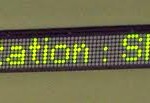When designing new products or iterations of existing ones there can be what seems like an almost infinite number of factors to take into account. One of these will be the user-interface, and due to a rushed development cycle your team may not be aware of or pay little attention to one very important factor of the user-interface design – accessibility for users with disabilities. Just for a moment – examine an existing product. Then try to operate it with your eyes closed. Such an exercise is one example that quickly illustrates the needs of the disabled.
Although you may design a product for an existing target market, or even for internal use – there may come the day when an employee or customer with a disability will use your product. Thus to avoid embarrassment, difficulty for all those concerned – and possible legal action, consider the target market and/or user in more detail to ensure accessibility for all. There is a wide range of disability categories to be aware of, however we will examine the four main types that should be considered.
Visual Disability
Although designing a product for those with a visual disability may seem quite difficult, there are many ways to enhance a user-interface to allow use by such members of the community. With larger devices there should be  room for Braille text adjacent to normal labels, or the spacing of controls that match pre-set sequences of operation for simpler devices. Digital audio devices are quite inexpensive and can be integrated with microcontroller designs to offer audio feedback by using pre-recorded audio files.
room for Braille text adjacent to normal labels, or the spacing of controls that match pre-set sequences of operation for simpler devices. Digital audio devices are quite inexpensive and can be integrated with microcontroller designs to offer audio feedback by using pre-recorded audio files.
For those with partial sight the ability to change the size, colour or contrast of any visual output would also be a great help. Finally, a not insignificant amount of the population is colour-blind, and this needs to be taken into account. For example using two separate indicator LEDs instead of a single red/green indicator.
Auditory Disability
Designing for those with partial or full hearing-loss will require research into the type of data or output that is normally heard by a user, and converting this into visual or physical indications. For example machine operators can hear when something is happening (or not) – whereas the hearing-impaired user will not know. In consumer or public devices, the simple display as well as spoken announcements are required. Systems that can indicate all possible statuses, modes and options in a visual format will be favoured and appreciated by those with hearing difficulties.
Cognitive Disability
Some people have difficulty with short-term memory, spatial reasoning skills and comprehension of data and instructions. As design engineers you may be familiar with multi-level menu systems or obscure system commands, however such complexity cannot be tolerated by all. By simplifying interfaces, reducing the number of menu options, using simpler wording on labels and displays, and requiring less comprehension by end users, can you meet the needs of this demographic of the population.
Motor Disability
Some users have difficulty with hand-eye coordination and muscle control. Therefore they may have difficulty with controls that require alignment, delicate turning, variations of pressure (such as a two-stage button similar to a camera exposure control) or buttons and switches that are just small. By using controls that require less thought and fine adjustment you can simplify the physical effort required to interact with the device an enhance accessibility for users with such afflictions.
Apart from the four categories listed above, there can users that fall into variations or combinations of disabilities. Although it can seem difficult to cater for every possible eventuality, research into end-users and customers will put your design team on the right path. It can also be useful to contact national associations or advocates for people with various disabilities for their advice – with a positive, mutual attitude they are always happy to help with interface design suggestions and improvements.
If your organisation is in the process of designing a new or updated product for use by the wider public, taking accessibility into account is vital. As part of our design process the engineers at the LX Group can work with your team and outside consultants to create the ideal interface for yoir product, and of course be your partner in any and all stages in the design and manufacturing process. No matter what stage of design your team has achieved, we can partner with you to share our design and manufacturing expertise for your benefit.
To move forward with your prototype requirements, simply contact us for a confidential discussion about your ideas and how we can help bring them to life – click here to contact us, or telephone 1800 810 124.
LX is an award-winning electronics design company based in Sydney, Australia. LX services include full turnkey design, electronics, hardware, software and firmware design. LX specialises in embedded systems and wireless technologies design. https://lx-group.com.au
Published by LX Pty Ltd for itself and the LX Group of companies, including LX Design House, LX Solutions and LX Consulting, LX Innovations.

